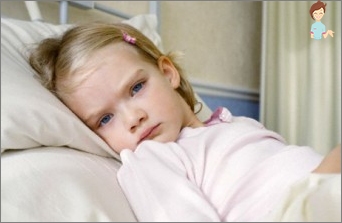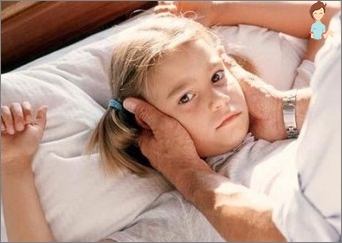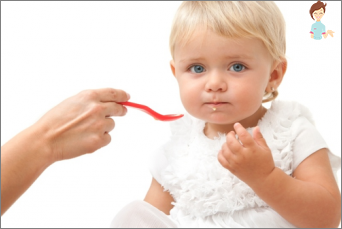How to overcome osteomyelitis at the kid?
What are the reasons for the appearance of osteomyelitis in children? Forms of the disease and methods of their treatment. Symptoms of acute and chronic, hematogenic and traumatic osteomyelitis
Osteomyelitis – infectious disease, affecting the bone, periosteum and bone marrow, accompanied by nudenia and inflammation, and in severe flow necrosis.
In the overwhelming majority, the disease provoke staphylococcis, but sometimes it is pneumococci and streptococci. In rare cases, the causative agent are microscopic mushrooms, intestinal wand, protea and other pathogenic microorganisms.
Traumatic osteomyelitis, how can be judged from the name, arises due to injuries, for example, after open fracture, firearm and T.NS. Hematogenous osteomyelitis in adults and children is the result of congenital or acquired internal infection. Most often, this form of the disease is diagnosed in newborns and older children. It is worth noting that the boys most often amazed. Blood infection is found after an abscess, purulent angina, boils, tonsillitis, carious teeth and other infectious pathologies. Purulent damage is localized not only on the bone, but also in the bone marrow. It leads to irreversible destructive changes.
Each type of disease has a form – may be chronic or sharp. The latter is most often observed in the development of the inflammatory process, that is, at the very beginning. In the absence of adequate treatment, it goes into chronic.
Acute hematogenous osteomyelitis is observed in children for no more than 4 weeks. The complexity of the diagnosis is that it is almost impossible to detect earlier than 14 days after occurrence.
The symptoms of the disease includes:
Symptoms of osteomyelitis develop in children very quickly, literally in 1-2 days.
Symptoms of traumatic form do not differ from hemmatogenic. The only nuance – the presence of open injury allows you to observe the development of pathology.
In the absence of treatment or in case of its insufficient performance, the acute form of the disease goes into chronic. The latter develops in 2-3 months from the moment of the defeat and is characterized by necrosis of the affected fabric.
Chronic osteomyelitis is characterized by children with two stages of the flow: peace and aggravation. They alternate with each other with different intensity, which is explained by the individual characteristics of the body.
Symptoms of chronic shape of hematogenic and traumatic osteomyelitis:
The diagnosis of chronic form of the disease includes radiographic and laboratory research. Proceed to it when the treatment of acute flow of the disease did not give tangible results.
In about 90% of cases, kids diagnose acute hematogenous osteomyelitis. The disease first striking the bone marrow, and then gets to the periosteum.
A feature of this pathology is that it is difficult to diagnose at an early age. The smaller the child, the harder doctors to make a diagnosis. Very often, the only symptom of pathology in children up to a year is anxiety and immobility.
Older children have the same signs as in adults.
Osteomyelitis in kids, as a rule, flows in one of 3 forms:
Children, due to the characteristics of the body, it is very hard to carry this ailment. When parents have noticed a low-rise nausea, headache, the child complains about the soreness of the limb, which blushed and echo, then you need to immediately contact the doctor. Doctor based on the results of X-ray, laboratory research and ultrasound, will be able to confirm or refute the alleged diagnosis.
Conservative therapy is carried out immediately in three directions. At first, the causative agent infection is removed from the body. Well proved in this case antibiotics. Widely used: Gentamicin, Fusidin, Lincomycin, Cefzol.
Other types of drugs of this series, including Penicillin, are ineffective. In addition, doctors prescribe powerful therapy to eliminate body intoxication. The set of measures includes plasma transfusion, hemosorption, hyperbaric oxygenation.
Does not cost and without increasing the resistance of the body to infections. The sick child should drink vitamins and a variety of immune system stimulants.
The treatment of osteomyelitis can be carried out surgically. At an early stage of the disease, the bone and drainage installation are often carried out. If phlegmon was formed, the operation includes cleansing from pus, the elimination of fistulas, and sometimes the removal of the affected defense.
Osteomyelitis in childhood is a great danger, so do not neglect treatment.
Parents must remember: the earlier the diagnosis is raised, the better the forecast and more effective the result of therapy. If you do not turn to a specialist in a timely manner, then the consequences of pathology will be negative, right up to death.
The causes of the occurrence and types of pathology
 The disease develops when penetrating microbes into the bone through the affected area (traumatic form) or in blood (hematogenic type).
The disease develops when penetrating microbes into the bone through the affected area (traumatic form) or in blood (hematogenic type).
Clinical picture
 If timely do not proceed to treatment, the intensured phlegmon is formed. Purulent inflammation affects the nearest cells. At this time, the condition of a person can improve a little, but the need for surgery is still present. If treatment does not begin, then purulent arthritis appears in the future and even sepsis – blood infection.
If timely do not proceed to treatment, the intensured phlegmon is formed. Purulent inflammation affects the nearest cells. At this time, the condition of a person can improve a little, but the need for surgery is still present. If treatment does not begin, then purulent arthritis appears in the future and even sepsis – blood infection.
Osteomyelitis in children
Treatment with various methods of osteomyelitis in children
 Local treatment of affected body tissues is required. In this case, they are resorted to physiotherapeutic procedures, as well as placing gypsum flashes on the sore limb.
Local treatment of affected body tissues is required. In this case, they are resorted to physiotherapeutic procedures, as well as placing gypsum flashes on the sore limb.


